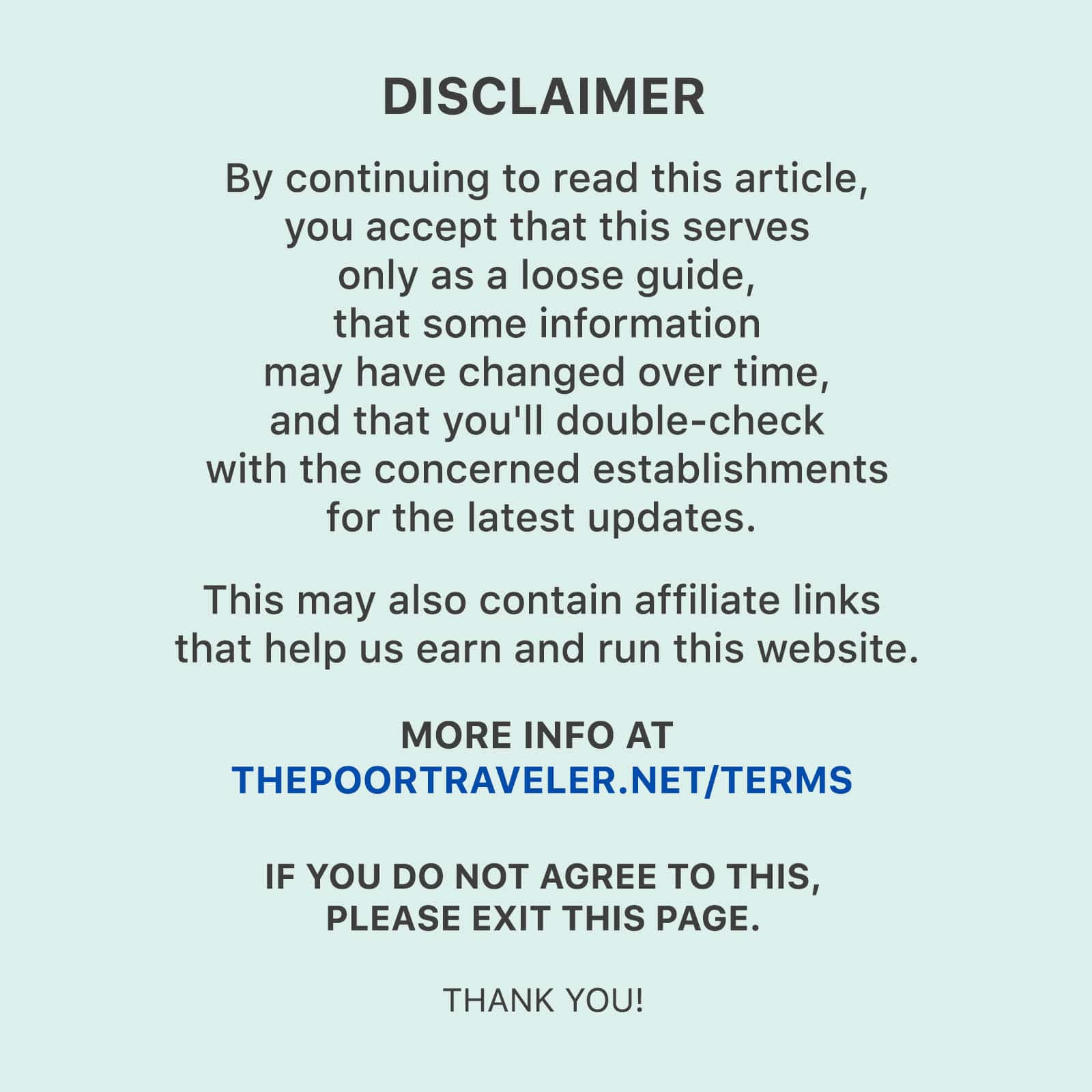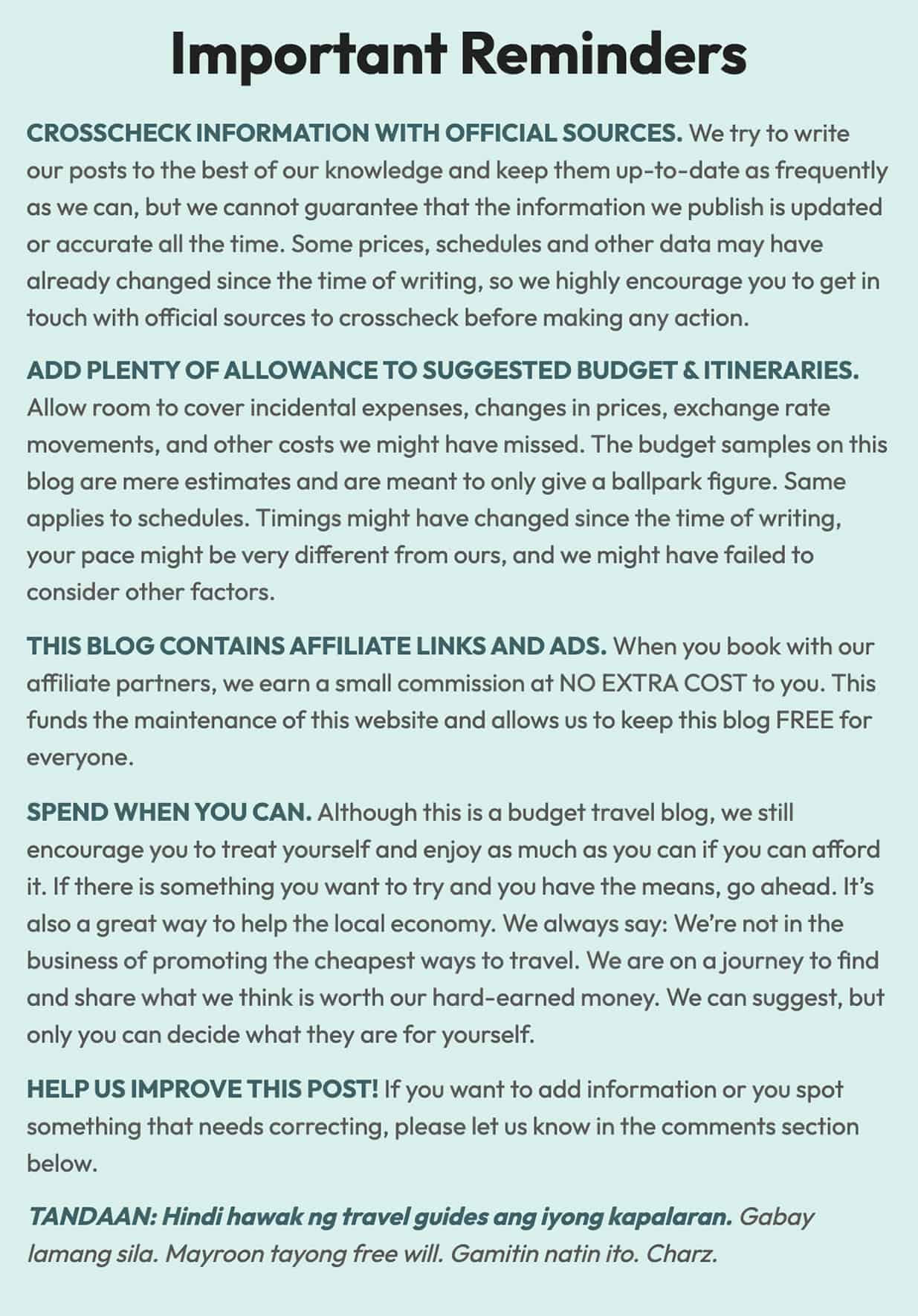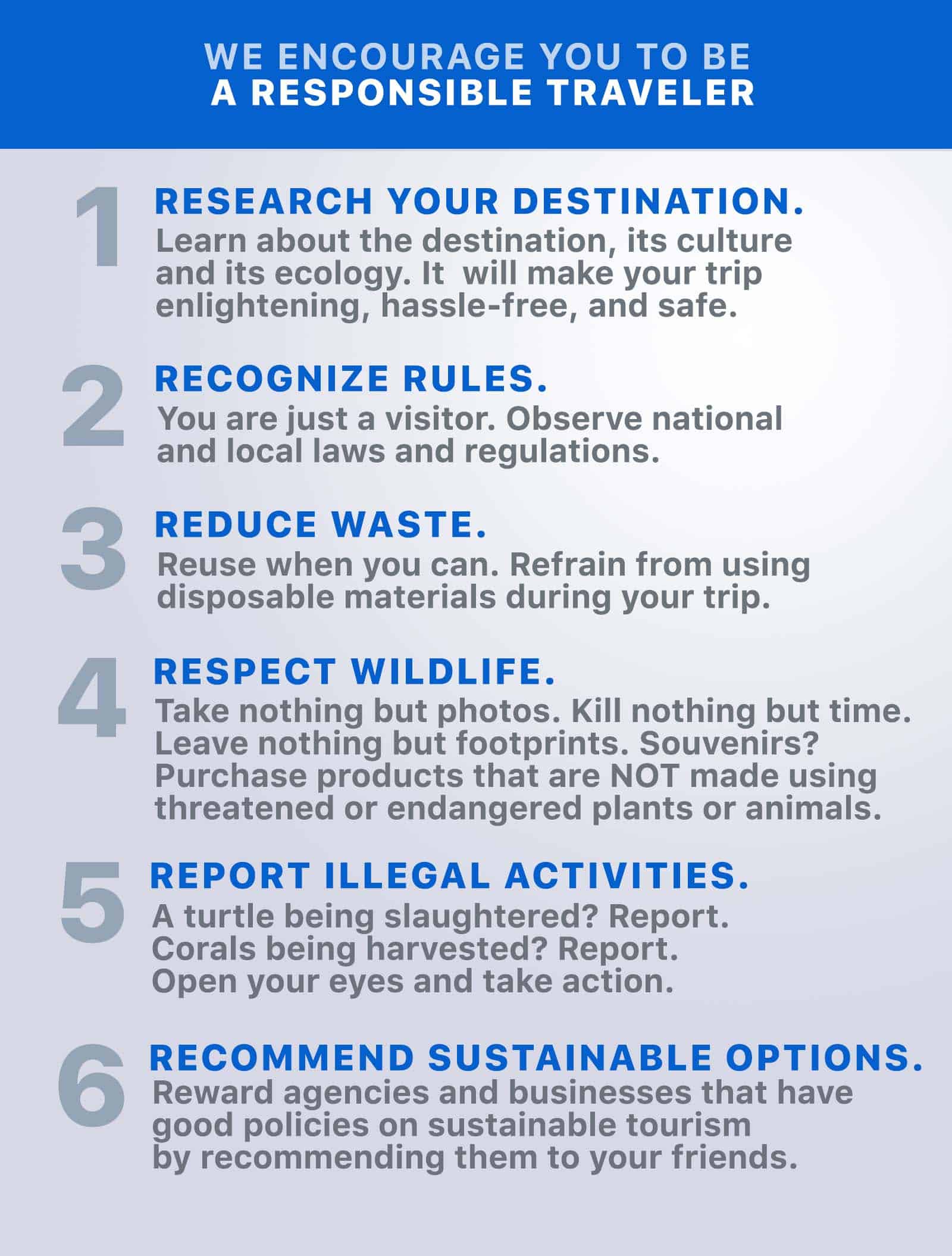Why don’t we use earphones when at the airport? And where exactly should we keep our power banks? Those are just some of the questions we’ll be answering in this article.
We’ll go through the common mistakes that first-time flyers often make. If it’s your first time traveling by air, I’m sure this post will be useful for you. Or if you know someone — a relative or a friend — who’s flying for the first time, you can share this with them. Even if you’re not a first timer, this is still worth reading because, sometimes, we forget to do or overlook the most basic things.
WAIT, WAIT, WAIT! If your are traveling soon and still on the planning stage, you can also visit our The Poor Traveler Masterlist. Here, we compiled travel essentials, including immigration requirements and all our recommended hotels and tours. Just visit this page: TPT Masterlist. We have a compilation for destinations around the world.
1. Arriving late or at the wrong time.
Check-in Counter Closing
Many first-time travelers don’t know that check-in counters usually close at least 45 minutes before the departure time — or one hour for international flights. That’s why we often see posts on social media complaining they weren’t allowed to board when they arrived at the check-in counter, let’s say, 30 minutes before their departure time.

There are also several steps or processes you have to go through before you can actually board the plane. So, you need plenty of time. In general, check-in counters open three hours before the departure time. For domestic flights, some airlines typically accommodate passengers at the assigned check-in counters two hours prior to departure. But for us, we aim to get to the airport four hours before the flight, especially during peak season, so we have allowance in case get stuck in traffic on the way to the airport. Our mantra: Better safe than sorry.
24-Hour Time Format
Another thing to remember is that airlines and airports around the world follow a 24-hour format or military time. So if your ticket says your flight is at 8:00, that’s 8AM. If it were 8PM, it should be 20:00. And 15:00 is not 5PM. It’s 3PM. The key is to subtract 12 to get the time in the afternoon or evening. So, 5PM is 17:00, and 7PM is 19:00. You may refer below for easy reference.
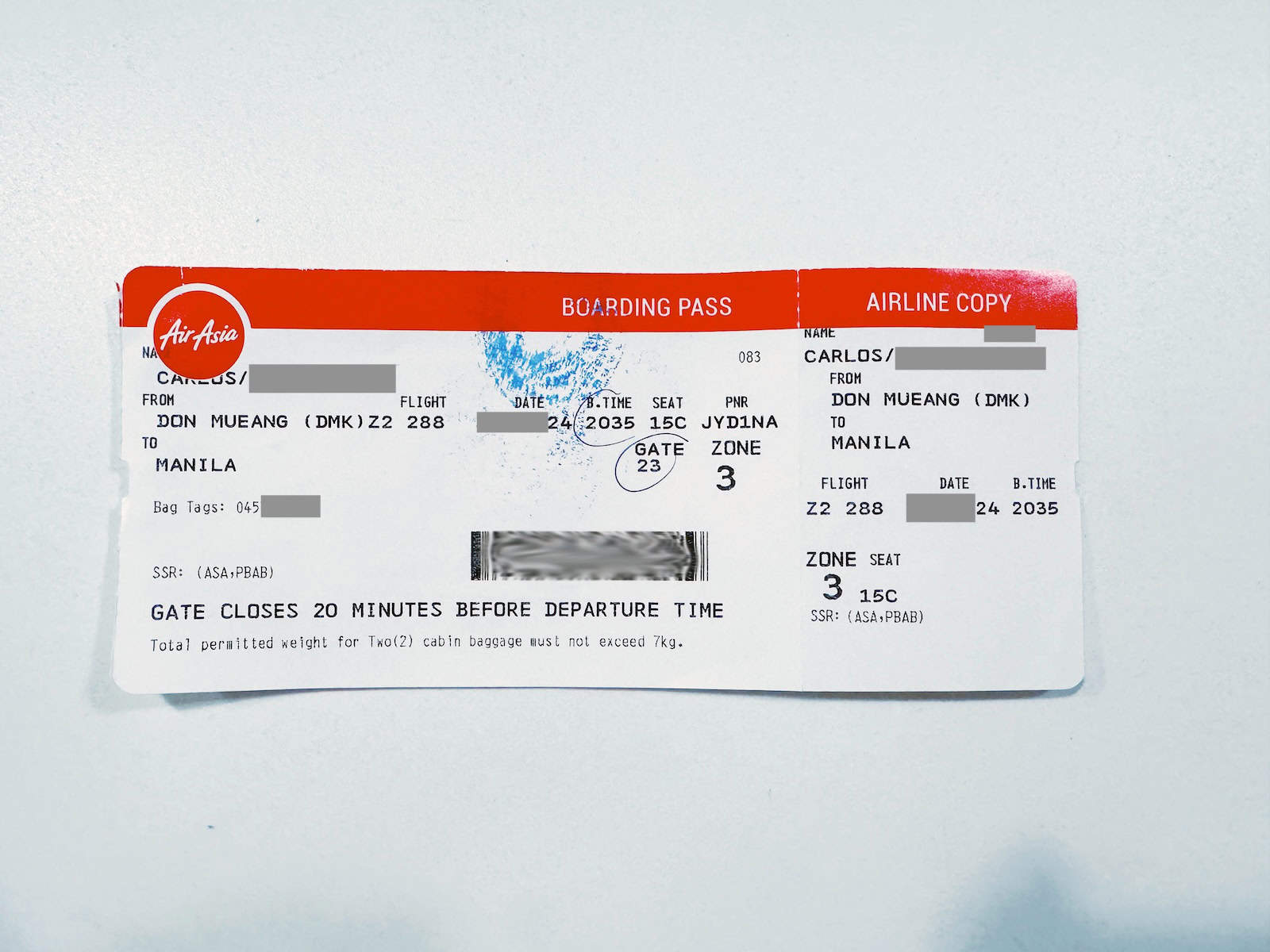
24-Hour Time Format
- 1:00 = 1:00 AM
- 2:00 = 2:00 AM
- 3:00 = 3:00 AM
- 4:00 = 4:00 AM
- 5:00 = 5:00 AM
- 6:00 = 6:00 AM
- 7:00 = 7:00 AM
- 8:00 = 8:00 AM
- 9:00 = 9:00 AM
- 10:00 = 10:00 AM
- 11:00 = 11:00 AM
- 12:00 = 12:00 PM
- 13:00 = 1:00 PM
- 14:00 = 2:00 PM
- 15:00 = 3:00 PM
- 16:00 = 4:00 PM
- 17:00 = 5:00 PM
- 18:00 = 6:00 PM
- 19:00 = 7:00 PM
- 20:00 = 8:00 PM
- 21:00 = 9:00 PM
- 22:00 = 10:00 PM
- 23:00 = 11:00 PM
- 24:00 = 12:00 AM
For seasoned travelers, you might think, “That’s so basic!” But a lot of first-timers really get confused…and even non-newbies!
We have a friend who travels internationally a lot, but for some reason, she experienced this during her Vietnam trip — maybe she was too tired that time and had a bit of a brain fog. Their flight was at 6 o’clock. Worried that they might miss it, they arrived at the airport as early as 1PM. Super early, right? But guess what — they still missed their flight! Why? Because they showed up at 6PM, when their flight was actually at 6AM. So they missed their flight and had to book a new one. That was an unnecessary expense. Money down the drain!
We also get many questions about this in our DM, and people also post about it in The Poor Traveler Support Group on Facebook. Many are still confused.
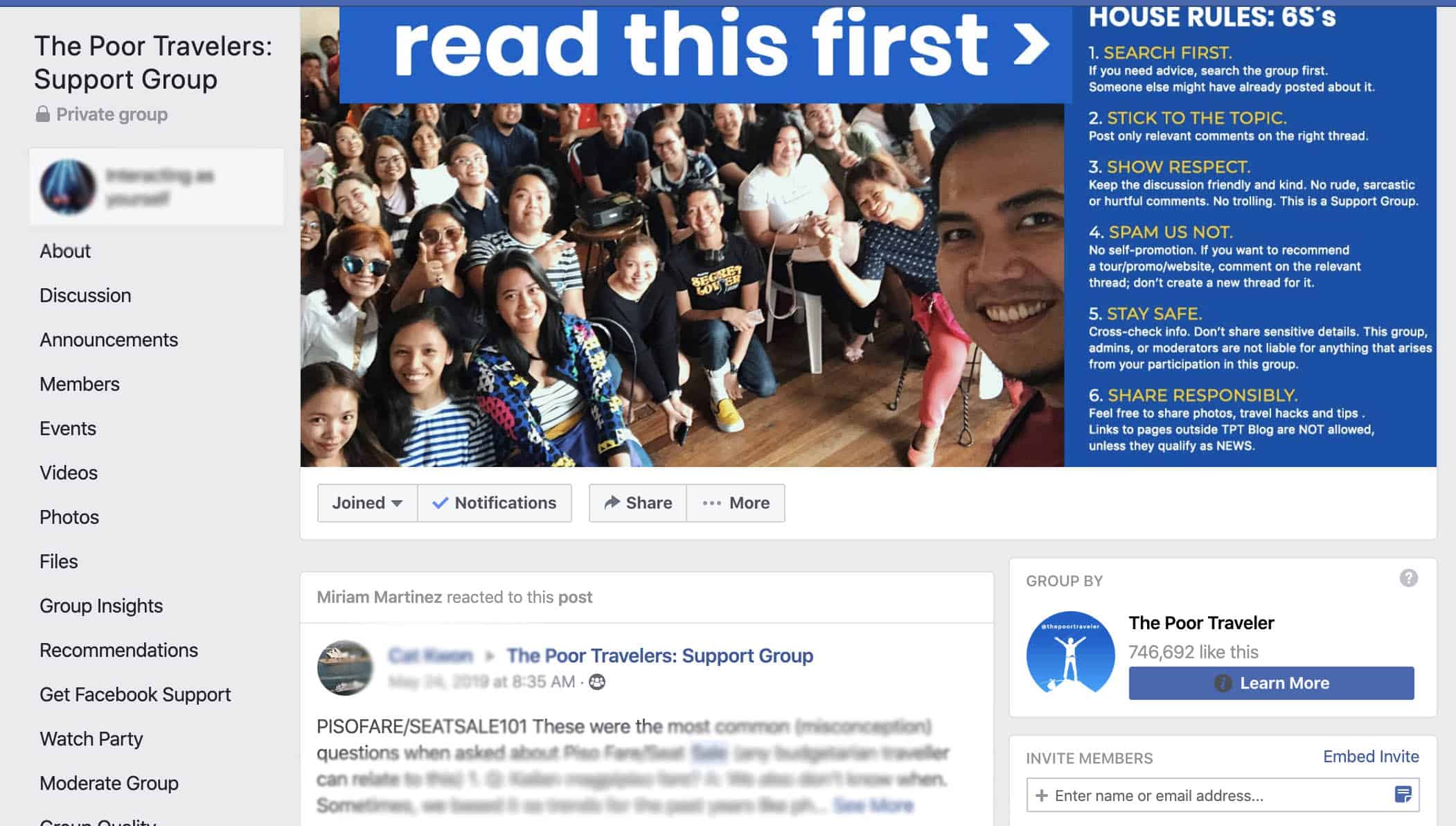
✅ If you have any questions or need travel tips, feel free to post them to the TPT Support Group. The members are very helpful. This Facebook support group has been around for a long time, and many members have found travel buddies through it. You can join too! Just visit The Poor Traveler Support Group. Note that this is different from The Poor Traveler Facebook page.
2. Arriving at the wrong terminal.
Many airports around the world have multiple terminals. Ninoy Aquino International Airport (NAIA), also known as Manila International Airport, has four terminals: NAIA Terminal 1, 2, 3, and 4. And each has its own assigned airlines and routes.

We won’t go through the terminal assignments because they change quite often. Just remember that when you book flights, your assigned terminal is indicated in your booking details. If there are any changes, the airline will inform. And if you prefer to check in online, you’ll also see your designated terminal there.
It’s always best to check directly with the airline. You’ll find a lot of information online, but since terminal assignments have changed several times over the past years, some of the details are already outdated. And it’s really inconvenient if you make a mistake, especially here in NAIA, where transferring from one terminal to another can be quite a hassle. If you go to the wrong terminal and you are running short on time, you might miss your flight.
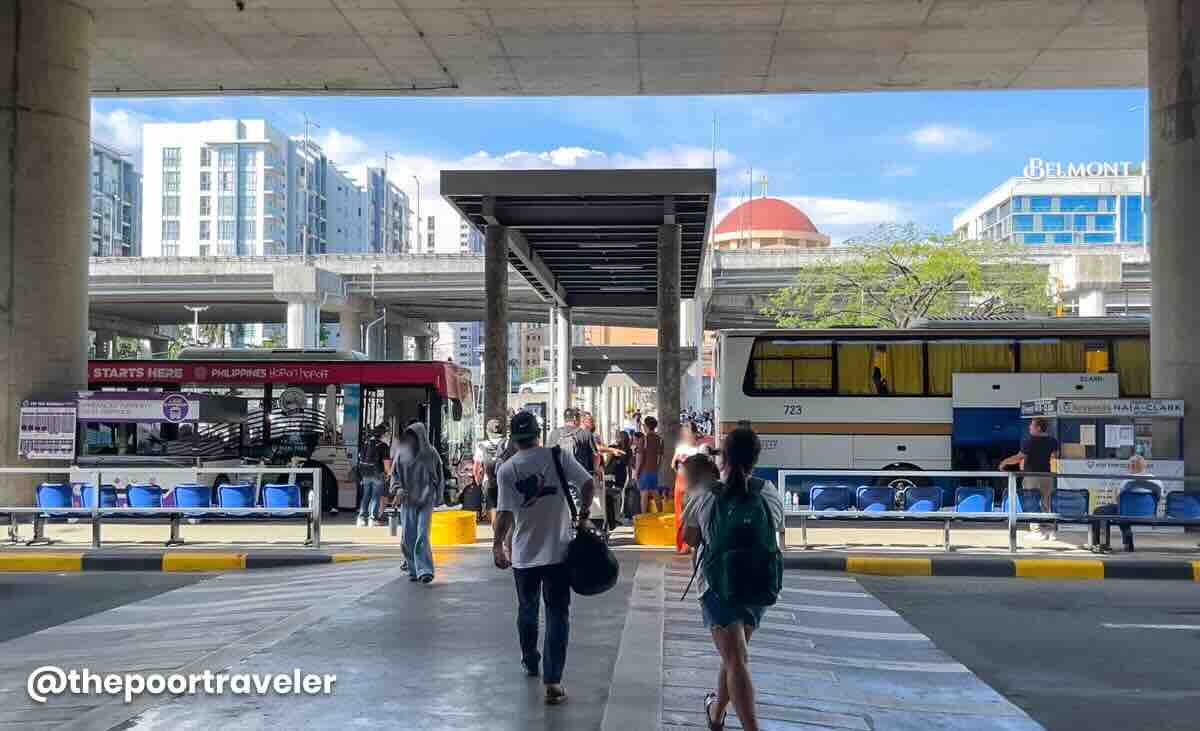
By the way, if you live far from the airport and you want to make sure you won’t be late, consider staying at a hotel near the airport. You’ll find plenty of options. We actually do that sometimes just to make the trip less stressful.
✅ If you decide to book a hotel, you can use our code AGODATPT for 10% OFF, maximum of PHP 5800 discount when booking through Agoda. Just enter it on the DEALS page of the Agoda app, and enter it again upon check out.
✅ If you prefer Klook, our promo codes are THEPOORTRAVELERKLOOK and TPTKLOOK5 for 5% OFF.
3. Skipping online check-in.
Airlines usually offer an online check-in option, and you should take advantage of it. When you check in online, it speeds up your wait at the airport because the line for passengers who checked in online is usually shorter. Although we’ve had a couple of instances where it was the opposite. But in general, the line for this is shorter.
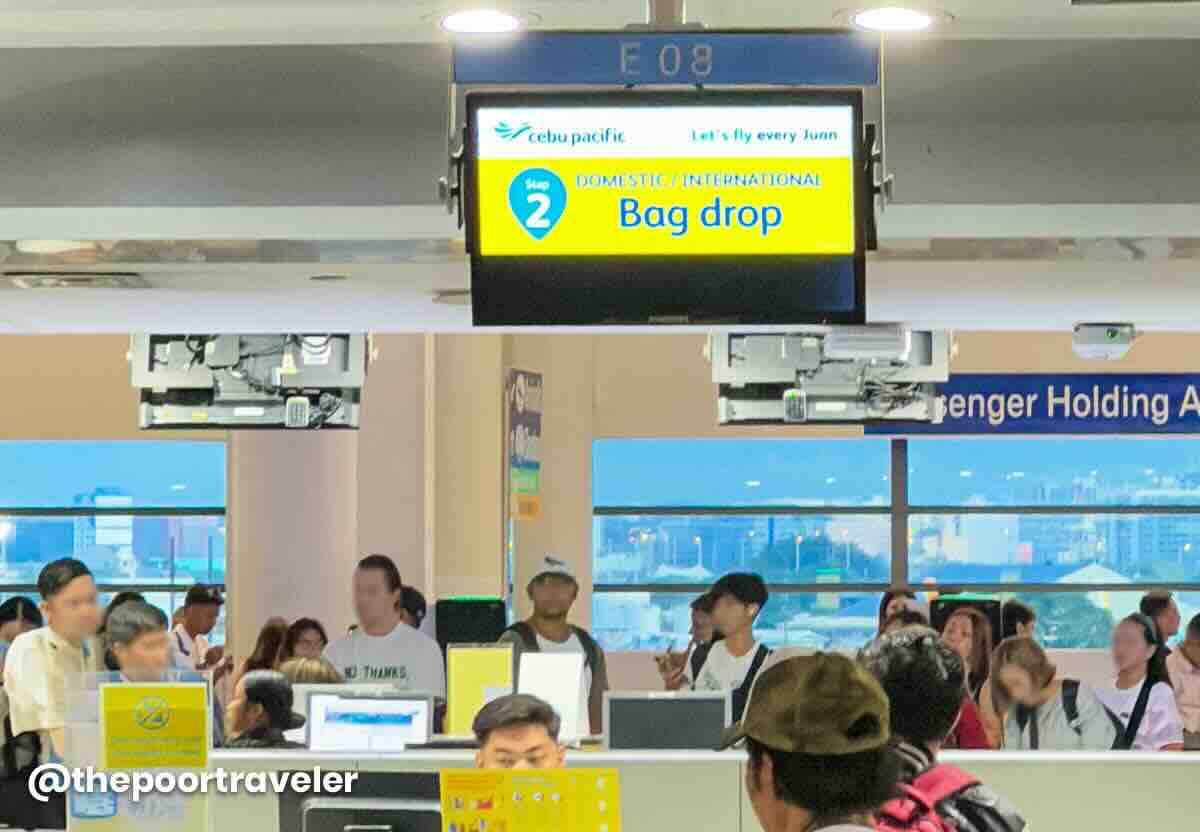
Here in the Philippines, we still normally need to line up if we have check-in bags. If you’re already checked in online, make your way to the counter with a “BAG DROP” label. Technically, you’re already checked in as a passenger. You’re just handing over your luggage. Some airlines, like in Europe and New Zealand, and I think in Hong Kong also, have machines for that, letting passengers check in their own bags.
And oftentimes, even if you didn’t pay for seat number selection but you checked in online early, there’s a higher chance you’ll still be seated together with your companions because there are still many available seats.
How early online check-in opens depends on the airline. Usually, it’s 24-48 hours before departure. But some airlines allow doing it much earlier, like days before. Like AirAsia, if you check in using the app, you can check in as early as 14 days ahead of your flight.
And the future is gearing toward online check-in. Some airlines in Europe even charge an extra fee if you check in at the airport, making online check-in a must if you don’t want this additional charge.
4. Miscalculating your bag’s weight.
It can really be a costly mistake if you exceed your baggage allowance. The weight limit depends on the airline, the route, and the fare class you booked. For low-cost carriers, it doesn’t automatically come with baggage allowance, unless you intentionally add it.
For example, with Cebu Pacific, you have these options: Go Basic, Go Easy, and Go Flexi. Go Basic is the cheapest, but it doesn’t include checked baggage — only a 7-kilogram hand-carry.

Meanwhile, with Philippine Airlines, checked baggage allowance is automatically included, but the size of the bag allowance depends on the fare class. They have Economy and Business Class. Under economy, you can sometimes choose from these: basic economy, economy saver, and premium economy. Each one has a different allocation — sometimes 23kg, other times 15kg. Just check what you book and its inclusions. If your ticket doesn’t include baggage and you want to add it, do this in advance. Don’t wait until you’re at the airport because it’s much more expensive.
Our tip: weight your suitcase or luggage at home.

We use a weighing scale from World Traveler. You basically hook your bag onto it, lift it, and then it shows you the weight. We also bring this when we travel, so we can check if we’re about to exceed our limit and if we need to buy extra baggage allowance. This is very useful for us. Sometimes, if travelers go beyond their baggage allowance and they’re not willing to pay extra, they’ll have to remove items from their bags. It’s such a hassle, and people in line get irritated because it takes so long.
5. Not packing your bags yourself.
You must be the one to pack your bag. Why? So you can be sure about everything that’s inside. There are many prohibited items, and you are responsible for your own bag or luggage.
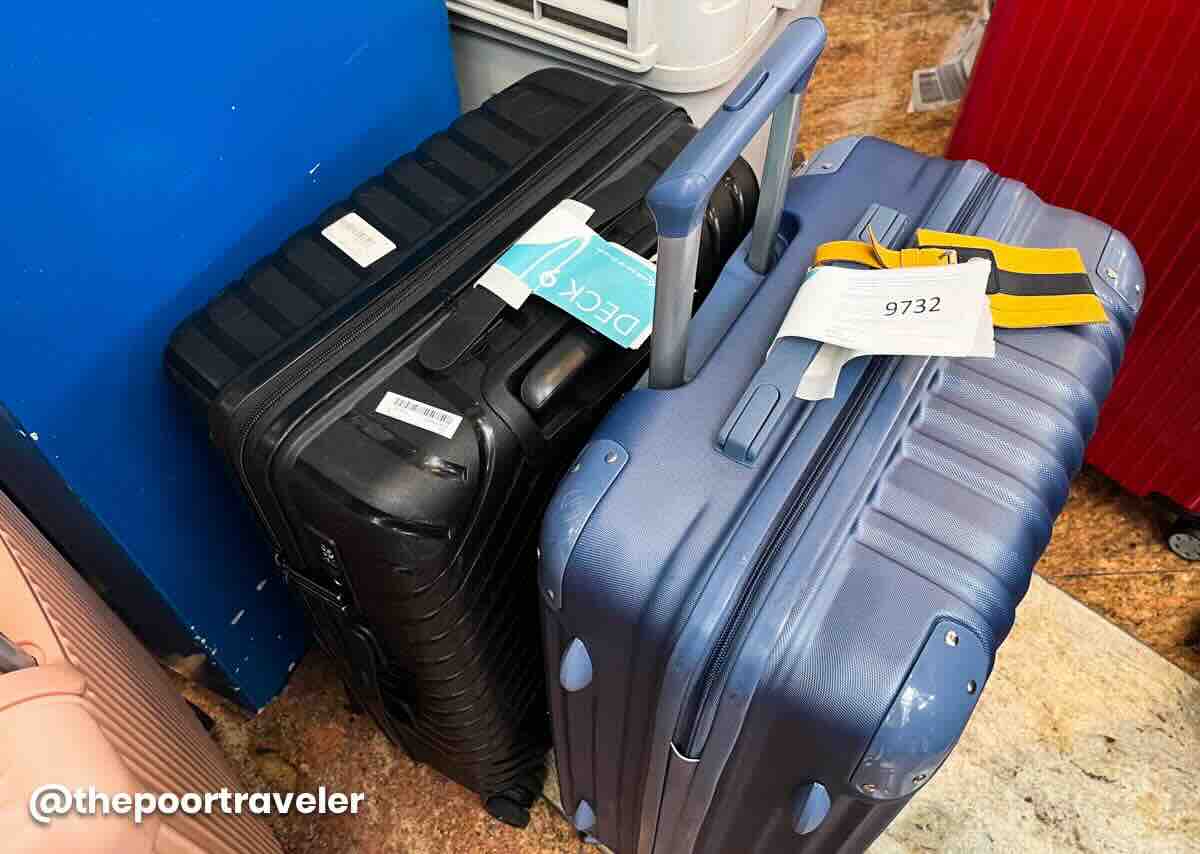
I have a related experience when I was traveling with my young nephew then. My sister was based in Tokyo at that time, and I was just accompanying him. His luggage was packed by his mom — my sister. So, I had no idea what items were inside his bag. At the airport, we had already checked in our luggage, gone through immigration, and were waiting at the boarding area. Then my nephew’s name was called over the intercom. Since he was a minor, I went instead of him.
When I got to this somewhat secluded area, the staff spoke to me. They told me that they detected something suspicious inside his checked-in bag. I was asked what it was. Neither my nephew nor I knew. So they asked me to open it. It was a power bank!
We can’t stress this enough: If you’re in charge of the bag, you should know what’s inside. This is also the reason why you shouldn’t accept or carry items from people you don’t know, especially those you just met at the airport. Again, never agree to carry someone else’s bag. You don’t know what’s in it. For all you know, it could be illegal, and you’re the one who’ll get in trouble.
And since we already mentioned power banks…
6. Not following power bank and liquid restrictions.
Liquid Restrictions
Remember, the liquids in your hand-carry or carry-on bag must not exceed 100mL per container. Note that they check the capacity of the container, not the current amount of liquid inside. For example, if you have a toner or a sunblock that’s already half-empty, but the container’s capacity is 200 mL, there’s still a chance it can be confiscated. If that’s the case, it’s safer to just check it in. And ideally, place your liquids in a clear pouch.

Power Bank Restrictions
These days, they’re getting stricter when it comes to power banks. There have been many cases of them exploding, so they must always be within your sight. That way, if something happens, it can be addressed or fixed immediately. Rules vary per airline, but let’s look at Philippine Airlines — it’s almost the same as Cebu Pacific.

First, you must carry it with you inside the plane. Never ever put it in your checked-in baggage, so you won’t end up in the same situation my nephew and I did. Moreover, while inside the plane, don’t put it in the overhead bins. You have to keep it on your person, or put it in the seat pocket or under your seat. You must place it somewhere you can always see. And of late, you’re no longer allowed to use it on board.
Also, it should not exceed 160 Wh (watt-hours). If it’s less than 100 watt-hours, no approval is required. And if it’s between 100 and 160 watt-hours, you need to have it approved at the check-in counter.
Since what we usually see is mAh, how do we compute watt-hours? To find out the watt-hours of our power banks, the formula is: (mAh x Voltage) ÷ 1000. That is mAh times voltage, then divide the product by 1000. So, for example, your power bank has 20,000 mAh and 3.7 volts. The watt-hours would be 74, so that’s allowed.
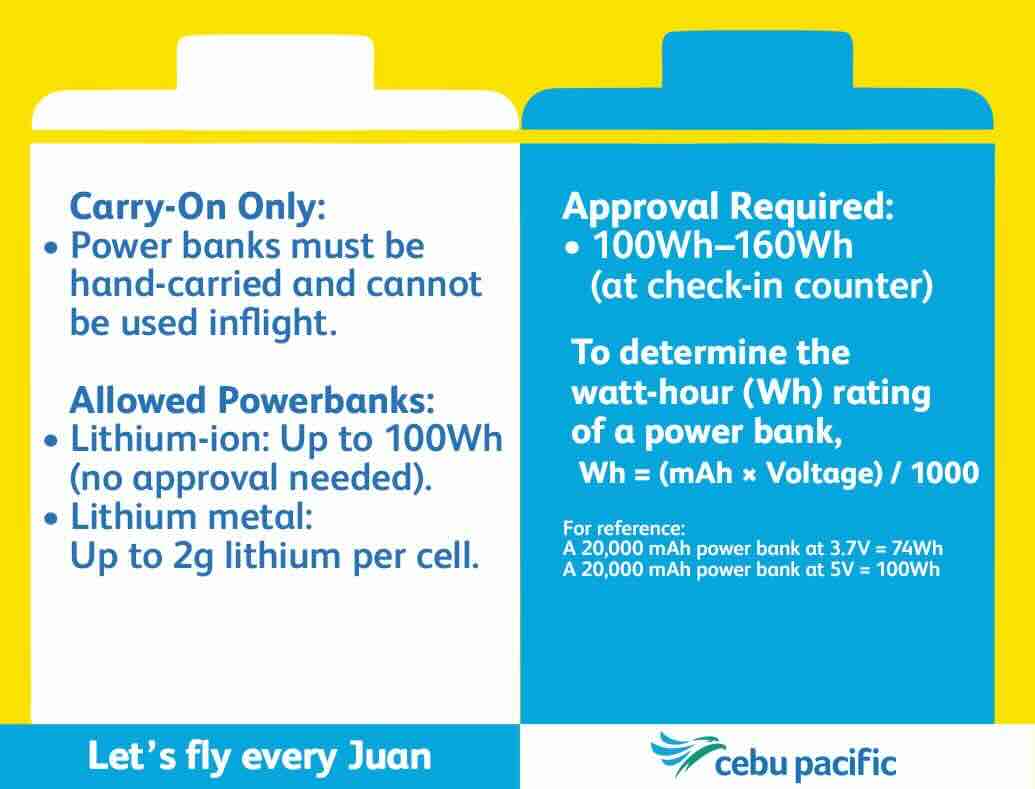
It’s also important to note that some airlines and countries require certifications for power banks, so be sure to check that too.
7. Losing your passport or boarding pass.
I am guilty as charged! There was this one time in Istanbul wherein I had already cleared Immigration and made it to the boarding area before realizing my passport was missing. I honestly had no idea where I’d left it, but fortunately, I was able to find it.
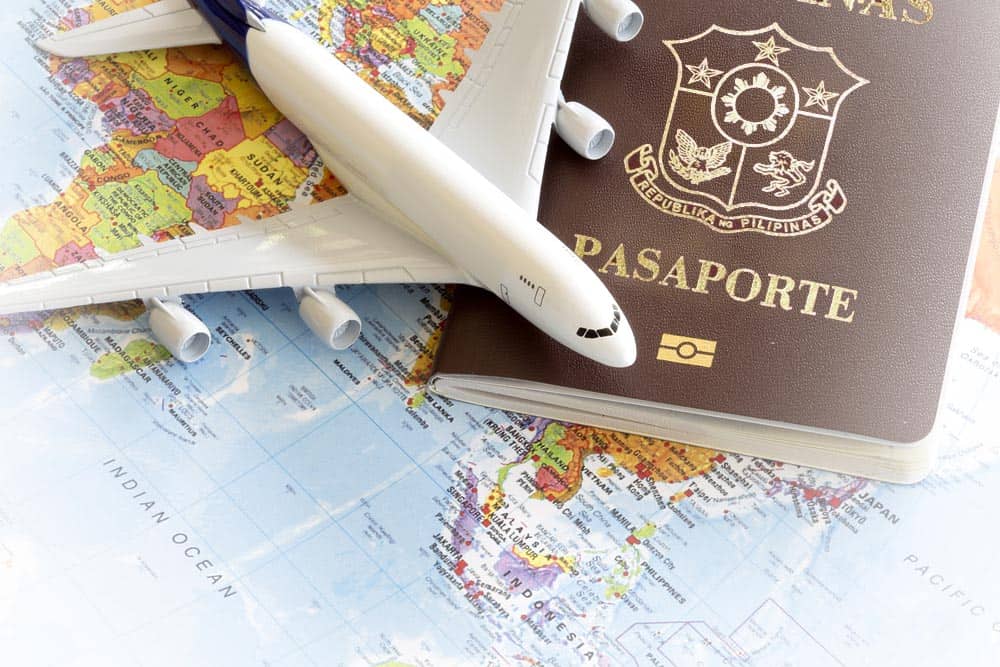
You’d be surprised that it’s more common than you think. Sometimes we just stick our passport somewhere and then forget where we put it. That’s why having a dedicated pocket in your bag for your passport and important documents is very convenient. It’s something you can easily access without mixing your passport with other items. Or if you don’t have that, you can buy a small clear envelope where you can keep your passport, boarding pass, etc. Since it’s clear, you can see it right away.
Boarding passes are easy to misplace also, since they’re just paper. So, sometimes, a digital copy is also okay. Make sure to take care of your travel documents, especially your passport.
I’ve learned my lesson. When flying, I always wear a polo with a pocket, where I keep my passport and boarding pass. I can see it instantly and get it easily when I need it. So, from check-in to boarding the plane, it’s just there in my pocket. And once I no longer need it, I put it in the small clear envelope and keep it in my bag.
8. Confusing boarding time with departure time.
Earlier, we discussed the difference between check-in time and departure time. This time, we’ll talk about boarding time.
So when you check in, you’re given a boarding pass, and it shows a time. That’s your boarding time. Sometimes, it also says “GATE CLOSES at ___“, followed by a time. That means you should be at the gate before that time.

This is because the gate usually closes 15-20 minutes before departure time, and sometimes, even earlier, depending on various factors. Once the gate closes, you cannot get in. For example, if your flight departs at 2PM and your boarding time says 1:40 PM, you should be at the gate by 1:40 PM. Don’t wait until 2PM!
Sometimes, we lose track of time when we get too comfortable at the lounge or café, or when we’re busy shopping. You could really miss your flight if everyone has already boarded and they’ve been calling your name with no response. The plane will leave without you.
Which brings us to…
9. Wearing earphones while waiting.
I always say this: the period before your flight departure is NOT the best time to go music-tripping. Why? Because updates on your flight status can change, and they announce these over the intercom. If you’re wearing earphones, you might not hear or notice the announcement because you’re not paying attention, especially if you’re not at the boarding gate.
This is very true here in the Philippines — at NAIA and other local airports, where the sound system is not great. It is often too soft, or if it’s loud, it’s hard to understand. So don’t overcomplicate things by listening to something else, even if it’s your favorite song or artist. Do it when you’re already on the plane.
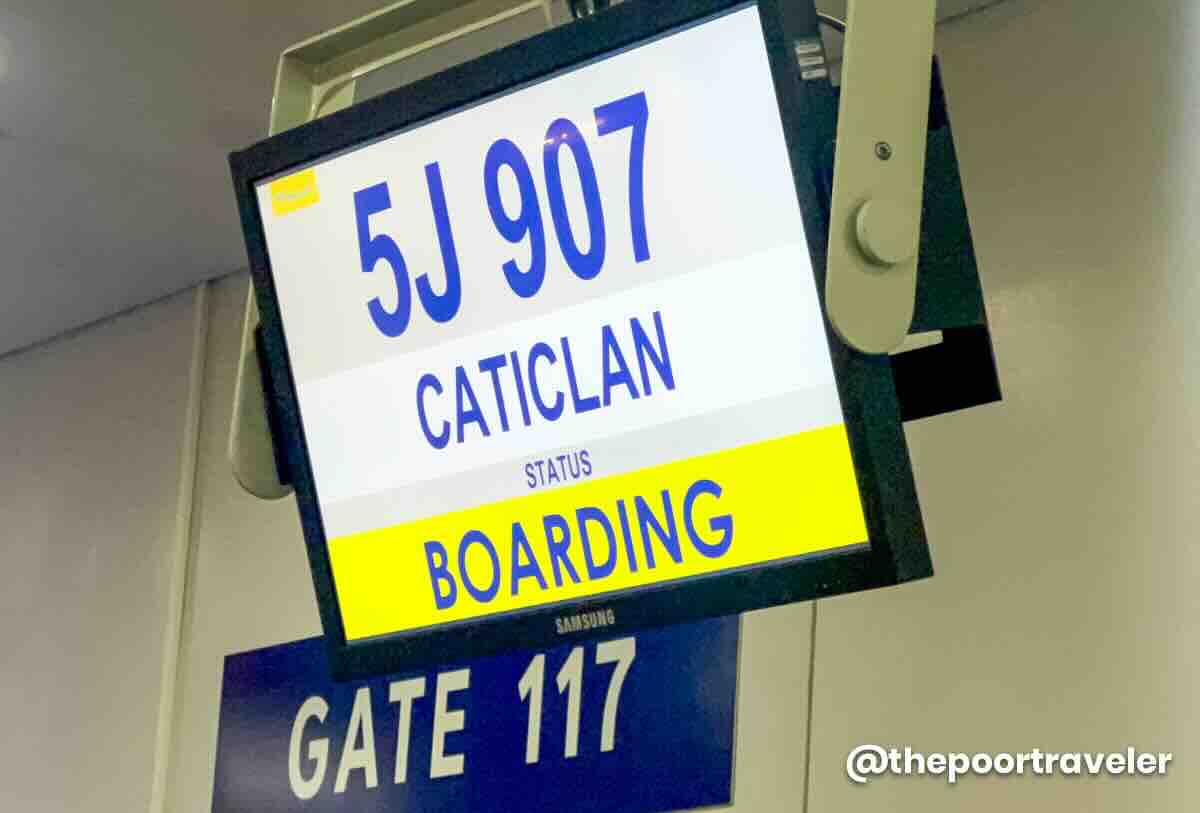
You might also be thinking, “Then I’ll just keep an eye on the time.” But that’s not a guarantee. I used to work for two airlines, and I know there are situations — not common, but they do happen — when a flight leaves earlier than scheduled. If the aircraft arrives ahead of time and boarding begins early, and you’re the only one missing, they will start to page your name multiple times over the intercom. And if you missed those calls, they will leave without you.
That also happened to us before. On one of our flights, we were in a lounge. We thought we still had plenty of time, but when we got to the gate, it was already their last call, and they had been paging us! It only happened once, and we’ll make sure it won’t happen again! We ran like crazy. It was so stressful!
It’s really best to head to the boarding gate with plenty of time to spare. But even if you’re already there, stay alert. You might miss a gate change or the start of boarding if, say, you get too absorbed in your phone. So, you must always pay attention.
10. Dismissing eTravel.
Many people still skip accomplishing the eTravel form because they think it’s optional. But this is mandatory for all travelers, whether Filipino or foreigner, who are entering or leaving the Philippines.

Every time we feature or mention eTravel, a lot of people still comment na that it’s such a waste of time because no one was checking it. But that’s because once you’ve completed it, they can already see it in the system, so they often won’t ask for it anymore. If you haven’t done it, they’ll also see that. What will happen is they’ll pull you aside and make you fill out the form using the tablets in the corner. This will delay you even more. It’s easier to do it at home, as early as 72 hours before your trip.
We have a more detailed step-by-step gude here: HOW TO ACCOMPLISH eTRAVEL FORM!
We’ll discuss this further, along with other mistakes related to Immigration and Security checks, in a separate article. That’s all for now. Remember, plan smart, travel safe, and make every trip worth it!
Have Peace of Mind While Traveling!
Getting a travel insurance is optional, but we highly recommend this, especially when traveling abroad. Travel can be unpredictable, and though we hope we’ll never use it, having it gives us peace of mind in case of unexpected delays, cancellations, or emergencies.
For international destinations, consider PGA Sompo’s TravelJOY Plus insurance. You can GET IT HERE. Don’t forget to use WORTHIT for a special affordable rate.
Updates Log
2025 11 14 – First uploaded
Edited by: Asta Alvarez

